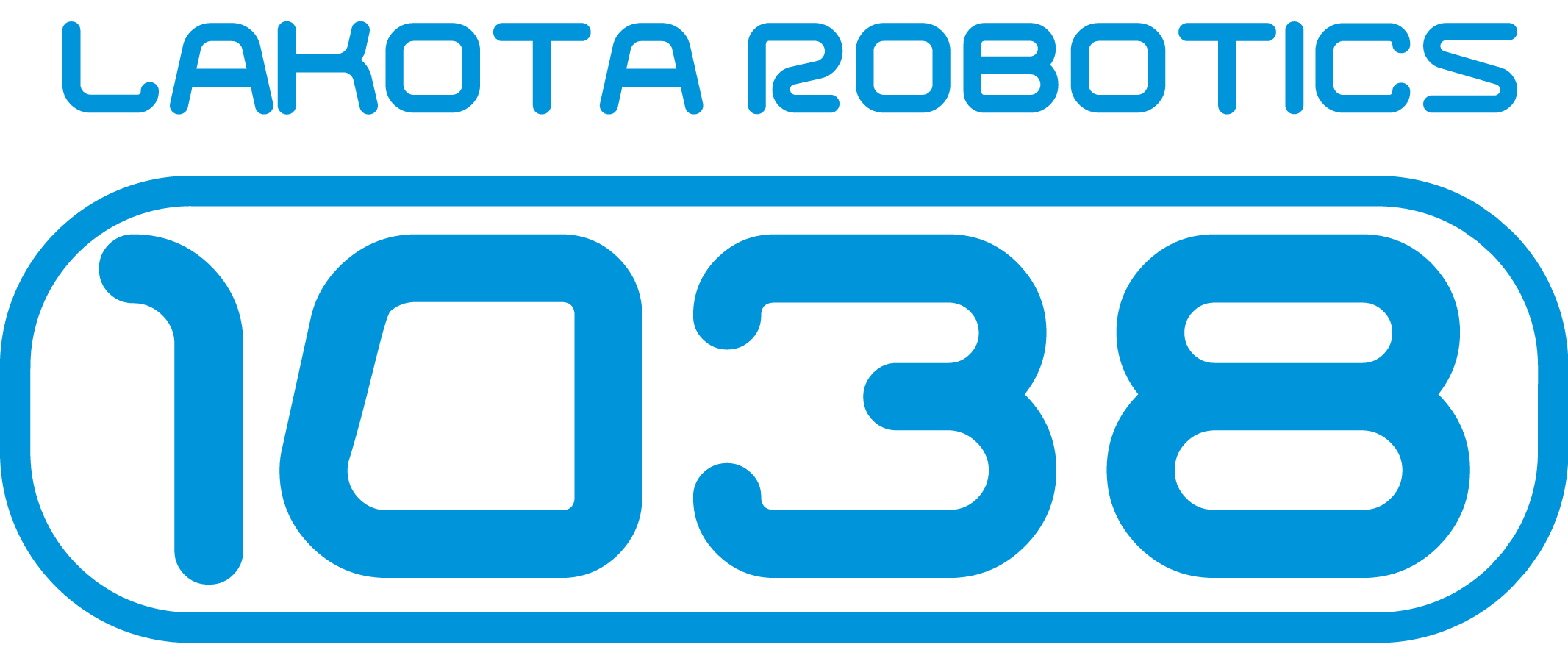Lakota Robotics | Game Announcements
2020 Game: Infinite Recharge
Check out this game reveal video!
Robot Name: Bampás

About the robot name

In loving memory of Paul George: a passionate mentor and caring friend.
(June 29, 1954 – January 15, 2020, age 65)
At the beginning of this season, our mentor Paul George passed away after a long battle with cancer, surrounded by family and friends.
Paul was affectionately referred to by the team as “Dad” and was very proud of his greek heritage. In his honor, we have name this year’s robot “Bampás” or μπαμπας which means “Dad” in greek.
You can read more about Paul in this article published by FIRST.
Field
Infinite Recharge is played on a 26 ft 11 1/4 in (~821 cm) by 52 ft 5 1/4 in(~1598 cm) field covered in grey low-pile carpet. The field is bounded by short transparent polycarbonate guardrails on the longer sides and the taller Alliance Station walls on the shorter side. The field features two sectors, with each containing one end for each alliance combined with the rendezvous point (center area). The sector contains robots at the start of each match, while drivers control their robots at the alliance station. The rendezvous point contains the Shield Generator and the Trenches.
Alliance Station
Each team has their own Alliance Station that is positioned at one of the ends of the field. The Alliance Station is where drivers control their robots, human players deliver game pieces to robots, and opposing alliance robots shoot game pieces. Alliance Stations contain three driver’s stations, one for each participating team in the alliance. The center player station is flanked on one side by the loading bay, and on the other side by the opposing alliance’s power port.
Loading Bay
Loading Bays are located in the alliance stations, with one per alliance. The Loading Bays are used by the human player to give game pieces to the robots on the field. There are five places that game pieces can be put into the Loading Bay, with two upper ports, and three ground ports.
Power Cell
Power Cells are the main game piece in Infinite Recharge. The Power Cell is a yellow, 7 in (~18cm) diameter Medium Bounce Dino-Skin foam ball. The FIRST logo is printed in black ink on each Power Cell.
Shield Generator
The Shield Generator is a large box-shaped structure located in the center of the field. It contains both alliances Rendezvous Points, as well as the two Generator Switches.
Trench Run
The Trench Run is an approximately 4 ft by 18 ft rectangular area on each side of the field bounded by alliance-colored tape that contains the alliance’s Control Panel. It is located in the middle of the field, directly adjacent to the Shield Generator.
Scoring Areas
Power Port
There are two Power Ports on the field, with one at each Alliance Station. An alliance’s Power Port is located at the opposing alliance’s Alliance Station, requiring robots that intake from the Loading Bays to drive across the field in order to score Power Cells. There are three levels of scoring on a Power Port. The rectangular Bottom Port is worth two points in autonomous, or one in the teleoperated (or teleop) period. The hexagonal Outer Port is located above the Bottom Port, and is worth four points during the autonomous period, and two points in teleop. The Inner Port is located inside of the Outer Port, and is a much smaller circular hole set in the back of the Outer Port. It is worth six points in autonomous, and three during teleop.
Scoring Power Cells into the Power Port contributes towards reaching Capacity. Upon scoring a Power Cell into any port, one point is credited towards reaching Capacity, regardless of where it is scored. Certain levels of Capacity require additional tasks to be completed. Lights around the Power Cell indicate progression towards reaching a stage’s Capacity, lighting up in a chase pattern when Capacity is reached but the extra condition is yet to be fulfilled. Upon reaching Capacity and completing the stage’s additional task, the stage is said to be Activated.
| Stage | Power Cell Capacity | Additional Conditions | Activating Grants |
|---|---|---|---|
| 1 | 9 | The teleoperated phasemust have begun. | Unlocks Rotation Control. |
| 2 | 20 | Rotation Control must be complete. | Unlocks Position Control. |
| 3 | 20 | Position Control must be complete. | One Ranking Point. |
Control Panel
There are two Control Panels placed on either side of the middle of the field, in each alliance’s Trench. They are large discs, with eight colored wedges (red, yellow, blue, and green, repeated once) printed on both the top and bottom. There is a glass panel on the bottom of the Control Panel, however, its wedges are still visible from underneath. After activating Stage 1 and reaching Stage 2’s capacity, an alliance may may score 10 points by performing Rotation Control on the Control Panel. This entails spinning the Control Panel at least 3 times, but not more than 5. Rotating past a fifth rotation resets this task, and the rotations must be completed again. After activating Stage 2 and reaching Stage 3’s capacity, the alliance may score 20 points by performing Position Control. This entails rotating the Control Panel to a certain color specified by the Field Management System through a message sent to each team’s driver’s station. When complete, this energizes the Shield Generator, gaining the alliance one ranking point.
Rendezvous Point
An alliance’s Rendezvous Point is located underneath the Shield generator, and is marked with each alliance’s color on three sides, with the fourth side being a black line separating the two Rendezvous Points. Alliances gain 5 points for each robot parked there when the game ends or 25 for each robot hanging, which will be explained below.
Generator Switch
A Generator Switch is located above each alliance’s Rendezvous Point, and is attached to the Shield Generator. During the final 30 seconds of a match, robots may extend up and attach to the bar on the bottom of the switch. Each robot attached to the switch and off the ground at the end of the match is worth 25 extra points. The switch is able to swing back and forth when robots attach to it, and there is an additional 15 point bonus for balancing the switch within ~8 degrees of level. An additional ranking point will also be given to an alliance if their endgame score (ie., that of climbing and parking) exceeds 65 points, which makes the Shield Generator operational.
Scoring Summary
| Action | Autonomous | Teleop | Ranking Points(in Qualification) |
|---|---|---|---|
| Initiation Line Cross | 5 points | ||
| Power Cells in Bottom Port | 2 points | 1 point | |
| Power Cells in Outer Port | 4 points | 2 point | |
| Power Cells in Inner Port | 6 points | 3 point | |
| Control Panel Rotation Control | 10 points | ||
| Control Panel Position Control | 20 points | ||
| Hang on Shield Generator | 25 Points | ||
| Park below Shield Generator | 5 Points | ||
| Generator Switch Level | 15 Points | ||
| Shield Generator Operational | 1 RP | ||
| Shield Generator Energized | 1 RP | ||
| Foul | 3 points to opposing alliance | 3 points to opposing alliance | |
| Tech Foul | 15 points to opposing alliance | 15 points to opposing alliance | |
| Win | 2 RP | ||
| Tie | 1 RP |
In qualification rounds, teams are ranked by their Ranking Score, or their average number of Ranking Points (RP) per match. To ensure high placement, it is not only important to win matches, but to complete the secondary objectives as well, to amass as many Ranking Points as possible.


